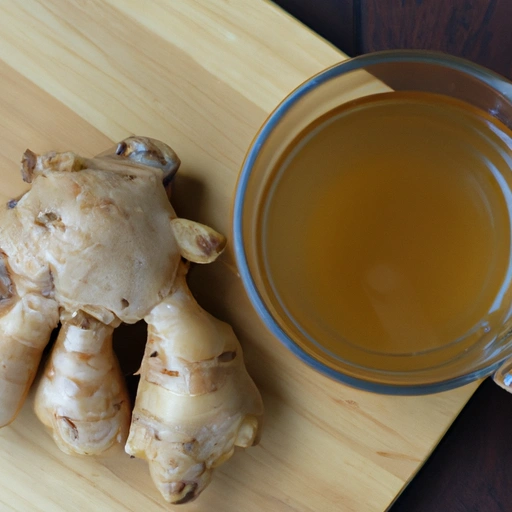Ginger Juice
Description

Ginger juice is derived from the root of the Zingiber officinale plant and is a potent extract that infuses dishes and beverages with its distinct, peppery, and slightly sweet flavor. Its versatility as an ingredient has made it a favorite in culinary traditions across the globe. In cooking, both fresh ginger juice and its dry, powdered form are used to add flavor and zest to recipes.
Common uses
Ginger juice is frequently used in marinades, sauces, dressings, teas, and beverages. Its strong flavor complements both sweet and savory dishes, and it is a common ingredient in Asian, Caribbean, and many other ethnic cuisines.
Nutritional value
Calories
A 1-ounce (28 grams / approx. 2 tablespoons) serving of ginger juice contains about 9 calories.
Protein
Ginger juice provides a minimal amount of protein, with approximately 0.2 grams per ounce.
Fat
This ingredient is virtually fat-free, with less than 0.1 grams per ounce.
Carbohydrates
Ginger juice contains about 2 grams of carbohydrates per ounce, primarily from natural sugars and dietary fiber.
Vitamins
It is a good source of vitamin C and also contains small amounts of B vitamins.
Minerals
Ginger juice is rich in minerals, including potassium, magnesium, and phosphorus, and also provides traces of calcium and iron.
Health benefits
Ginger juice is well-known for its anti-inflammatory and antioxidant properties. It aids in digestion, relieves nausea, and may reduce muscle pain and soreness. Some studies suggest ginger can also help lower blood sugar levels and improve heart health.
Potential risks
While ginger juice is generally safe for most people, excessive consumption can lead to gastrointestinal discomfort. It may also interact with certain medications, such as blood thinners. It's recommended to consume ginger juice in moderation, especially for those with gallstone disease or those taking medications.
Common recipes
Ginger juice is used in ginger tea, smoothies, salad dressings, marinades for meat and fish, and in baking recipes like gingerbread and cookies. It is also a key ingredient in homemade ginger ale and other beverages.
Cooking methods
It can be added during the cooking process or used as a finishing touch for its bright, pungent flavor. It pairs well with baking, boiling, and sautéing methods.
Pairing with other ingredients
Ginger juice pairs exceptionally well with ingredients such as garlic, soy sauce, honey, lemon, and a variety of fruits and vegetables. It also complements meats like chicken, beef, and seafood.
Summary
Ginger juice is a dynamic and healthful ingredient that brings a unique flavor profile to dishes and drinks. Its historical significance and widespread use in a multitude of cuisines attest to its versatility and beneficial properties. Whether used in traditional recipes or innovative culinary creations, ginger juice adds a burst of flavor and a host of health benefits to any meal.